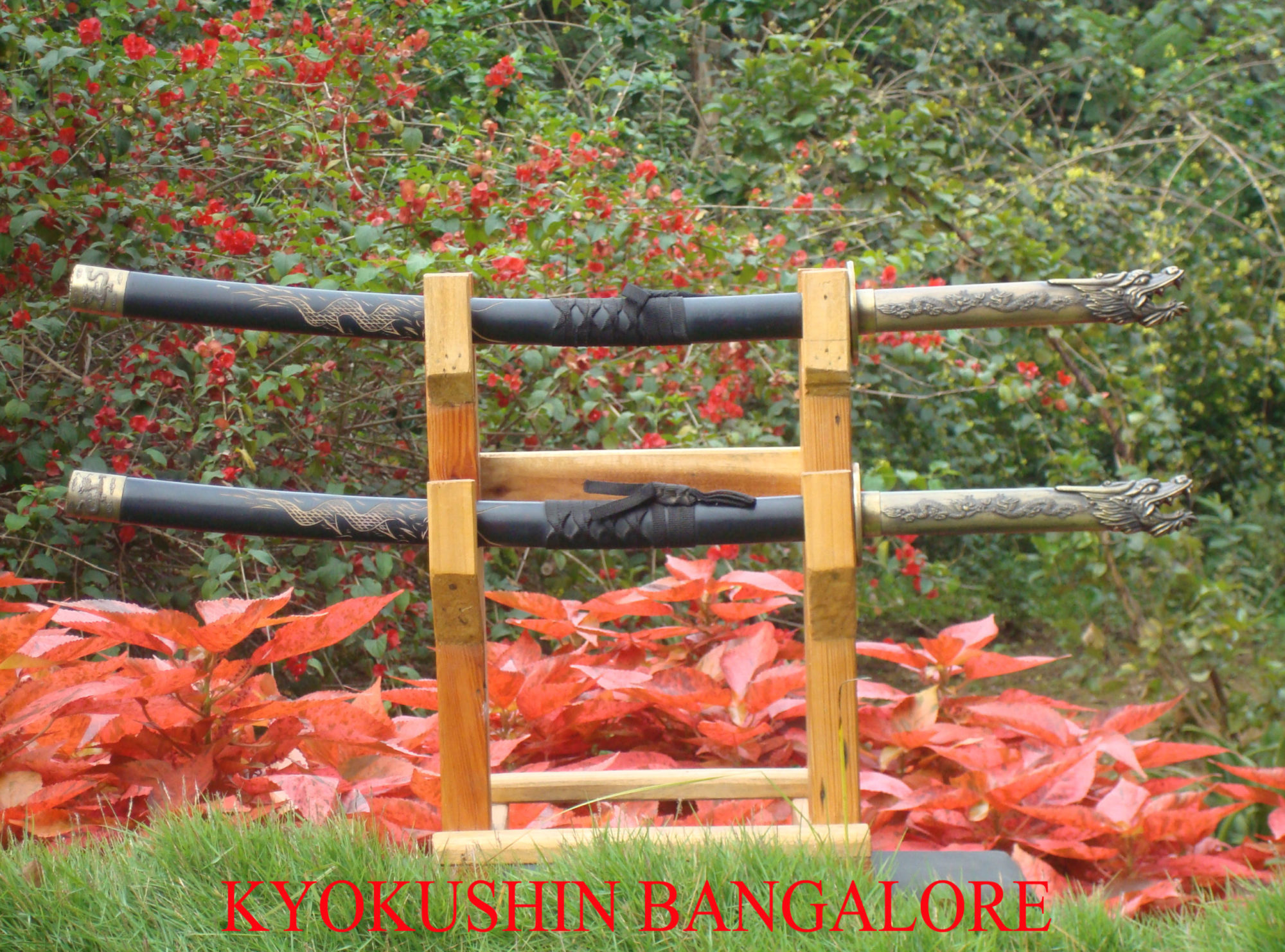
DOJO ETIQUETTE
Dojo Kun
“We will train our hearts and bodies for a firm unshaking spirit.
We will pursue the true meaning of the martial way, so that in time our senses may be alert.
With true vigor, we will seek to cultivate a spirit of self denial.
We will observe the rules of courtesy, respect our superiors, and refrain from violence.
We will follow our god, and never forget the true virtue of humility.
We will look upwards to wisdom and strength, not seeking other desires.
All our lives, through the discipline of karate, we will seek to fulfill the true meaning of the Kyokushin way.”
Sosai’s Eleven Mottos
- The Martial Way begins and ends with courtesy. Therefore, be properly and genuinely courteous at all times.
- Following the Martial Way is like scaling a cliff. Continue upwards without rest. It demands absolute and unfaltering devotion to the task at hand.
- Strive to seize the initiative in all things, all the time guarding against actions stemming from selfish animosity or thoughtlessness.
- Even for the martial artist, the place of money cannot be ignored. Yet one should be careful never to become attached to it.
- The martial way is centred in posture. Strive to maintain correct posture at all times.
- The martial way begins with one thousand days and is mastered after ten thousand days of training.
- In the martial arts, introspection begets wisdom. Always see contemplation on your action as an opportunity to improve.
- The nature and purpose of the martial way is universal. All selfish desires should be roasted in the tempering fires of hard training.
- The Martial Arts begins with a point and ends in a circle. Straight lines stem from this principle.
Spirit of Osu
Osu is the one word that you would hear the most in a Kyokushin dojo or at a Kyokushin tournament. When you enter or leave the dojo, you bow and say “Osu”. When you greet a fellow Kyokushin karateka, you say “Osu” instead of “hello”. When you respond to an instruction or question in class, you say “Osu” instead of “yes” or “I understand”. When performing kihon waza (basic techniques) in class, each technique is often accompanied with a loud “Osu”. When practicing jiyu kumite (free fighting) in class and your opponent lands a good, hard technique, you say “Osu” to acknowledge your opponent’s skill. As a measure of respect, knockdown fighters at a tournament bow and say “Osu” to the front, to the referee and to each other, before and after the fight. Osu is used in many situations and seems to mean a lot of things. But what does it really mean?
Osu is a contraction of the words: Oshi meaning “Push”, and
Shinobu meaning “to Endure”.
It means patience, determination and perseverance. Every time we say “Osu”, we remind ourselves of this.
Kyokushin training is very demanding. You push yourself until you think you’ve reached your limit. First your body wants to stop, but your mind keeps pushing you. Then your mind wants to stop, but your spirit keeps you going. You endure the pain. You persevere. That is Osu.
Kyokushin karate is not learned overnight. It takes years to properly learn the fundamentals. The basic techniques are performed thousands of times (ren ma – “always polishing”) until they are done by reflex or instinct, without conscious thought (mushin – “no mind”). It’s easy to get frustrated by doing the same thing over and over again, especially when progress seems to be slow. To overcome that frustration and continue training takes patience and determination. That is Osu.
The absolute and unfaltering devotion needed to “scale the cliff” of Kyokushin karate is Osu. The word “Osu” becomes habitual and a part of you once you are into the Kyokushin spirit.
General Etiquette
Before entering the dojo everyone must remove their shoes and arrange them neatly outside of the dojo’s entrance. Next, students must place anything they are carrying in their hands on the floor and bow whilst saying ‘Osu!’ two times. To bow correctly from a standing position:
- Stand in shezentai (standing position).
- Bring the fists to the opposite ears.
- Drop the fists downwards across the body until the fists are parallel to the floor.
- Extend the spine and bow the head 30 to 40 degrees. Do not bow so deeply that you cannot see your opponent.
- Return to the original position.
Kyokushin Karate training begins the moment a student enters the dojo. Once inside the dojo students must approach all senior grades in belt order and say Osu! Students must always focus on keeping their backs straight, fists above belt height and must always answer the sensei or senpai with Osu!
When training with a partner, students must say Osu! Onegaishimasu before beginning their practice and then Osu! Arigato Gozaimashita after finishing. �ޡ��h�<=,��
